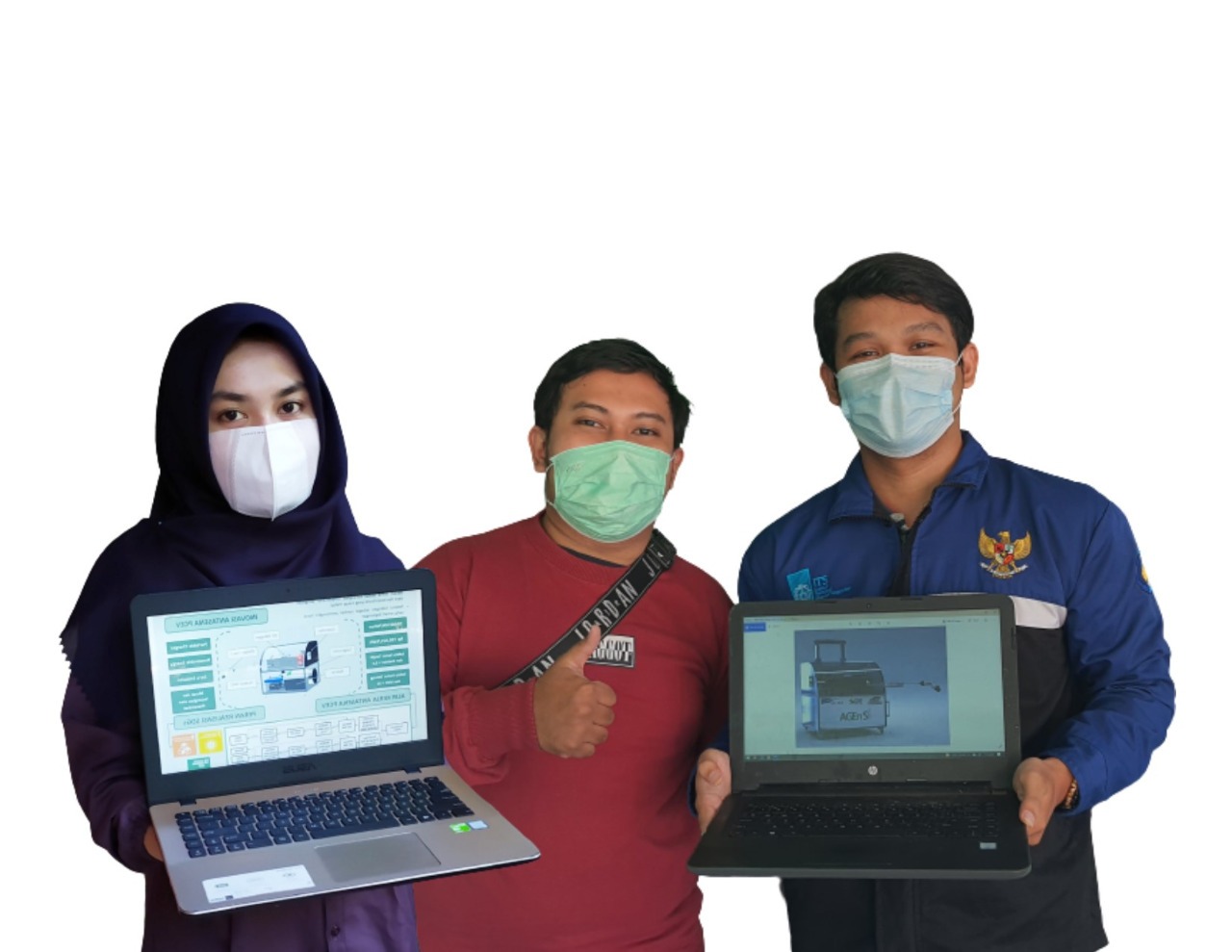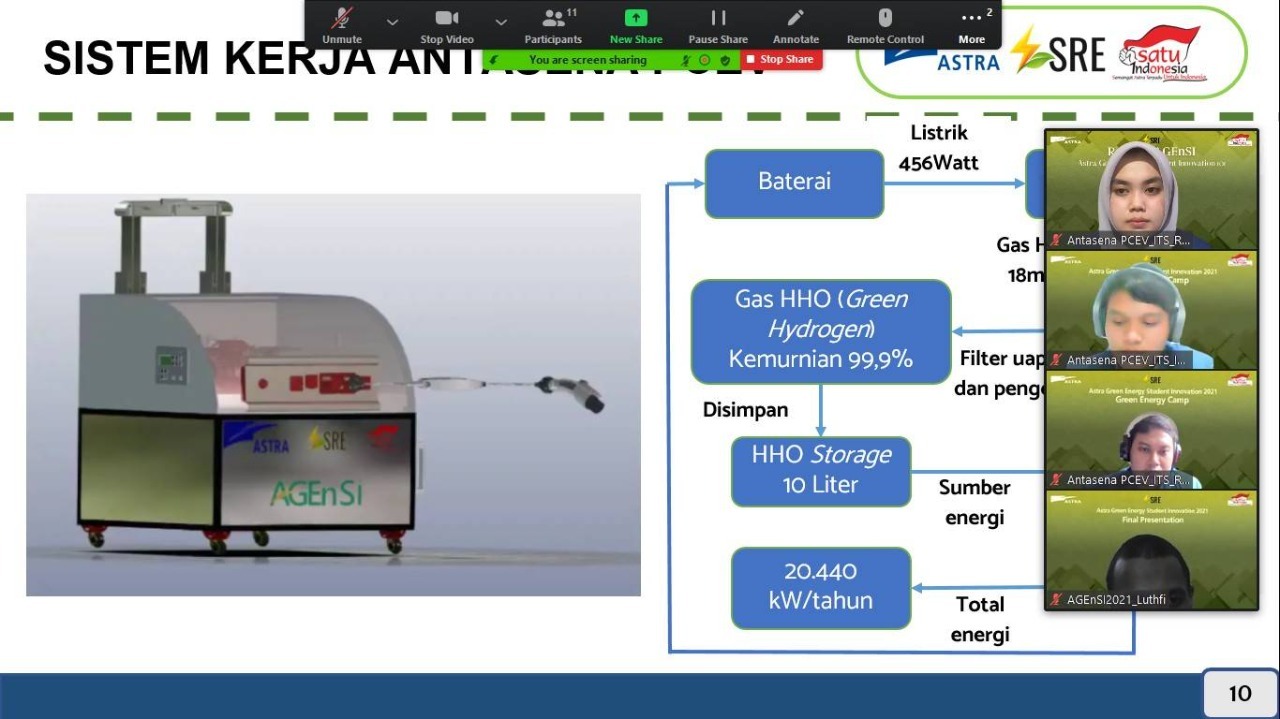Antasena ITS Team Designs a Portable Charger Based on Green Hydrogen
ITS Campus, ITS News – Even though Indonesia has relatively enormous market potential, electric vehicles are still less attractive to the country. Due to the lack of infrastructure for charging vehicles. Seeing this, the Antasena ITS Team from Institut Teknologi Sepuluh Nopember (ITS) designed a green hydrogen-based portable charger for the electric vehicle. The portable charger can be applied to electric cars in Indonesia and draw public interest in electric vehicles.
The head of the Antasena PCEV Team, Ibrahim Fathahillah Hizbul Islam, said that he designed the portable charger with his two teammates. The charger could accelerate the electric motor vehicle program launched by the Indonesian government. “The current electric vehicles are not in demand due to the lack of infrastructure for charging vehicles and the high cost of electricity,” said the student called Fatah.
Departing from there, Fatah and the team designed a charger named after the team name, Antasena Portable Charger Electric Vehicle (Antasena PCEV), which can provide energy efficiency and increase public interest in the ease of use of electric cars in Indonesia. “This tool is designed with dimensions of 0.98 x 0.56 x 0.79 cubic meters and has two modes called portable and generator,” said the young man from Surabaya.

(from left) Risa Wahyu Widyastuti, Rikza Octavian Pratama, and Ibrahim Fathahillah Hizbul Islam who are members of the Antasena PCEV team
Fatah said that portable mode is used when he wants to travel far, especially on electric cars. At the same time, the generator mode can be used for charging all-electric vehicles without PLN electricity in their respective homes. “Both modes operate by entering the water in the hydrogen reactor so that it is unique as a zero-emission generator with easily available water ingredients,” said Fatah.
Fatah explained that the Antasena PCEV system works by electrolyzing water into green hydrogen in a reactor that uses 456 watts of power with NaOH. Then, Hydrogen Hydrogen Oxygen (HHO) gas will be formed, flowed, and converted into electrical energy up to 7 kilowatts by the hydrogen Internal Combustion Engine (ICE). “So it is compatible for fast-charging electric cars with a time of 1 hour 58 minutes on a 13.8-kilowatt battery,” he said confidently.
Antasena PCEV is estimated to generate electricity of up to 20,440 kilowatts per year, with an estimated equipment price of around Rp. 14 million. Fatah and his team believe that the price is meager when compared to PLN electricity which reaches Rp. 29,529,668 per year, so it is still affordable for the public to buy. “In addition, at the maximum battery condition, it is estimated that the distance that can be covered is 133.86 kilometers,” said the third-year student.

Antasena PCEV team conducting the final online presentations at the AGENT SI 2021 event
Through their innovation in designing the portable charger, the Antasena PCEV ITS Team won the Best Vote category in the 2021 Astra Green Energy Student Innovation (AGn SI) event on June 22. Along with Fatah, the team consists of two other the Department of Materials and Metallurgical Engineering students, Rikza Octavian Pratama and Risa Wahyu Widyastuti.
In the future, the team led by Sutarsis ST MSc hopes that the Antasena PCEV innovation can get funding to develop it further. “We also hope that Antasena PCEV can be realized for mass production so our people (Indonesian, red) can use it,” concluded Fatah. (sel/ITS Public Relation)
Reporter: Tyara Novia Andhin
Related News
-
ITS Wins 2024 Project Implementation Award for Commitment to Gender Implementation
ITS Campus, ITS News —Not only technology-oriented, Institut Teknologi Sepuluh Nopember (ITS) also show its commitment to support gender
July 13, 2021 21:07 -
ITS Professor Researched the Role of Human Integration in Sustainable Architecture
ITS Campus, ITS News –The developing era has an impact on many aspects of life, including in the field
July 13, 2021 21:07 -
ITS Sends Off Group for Joint Homecoming to 64 Destination Areas
ITS Campus, ITS News — Approaching Eid al-Fitr, the Sepuluh Nopember Institute of Technology (ITS) is once again facilitating academics who want
July 13, 2021 21:07 -
ITS Expert: IHSG Decline Has Significant Impact on Indonesian Economy
ITS Campus, ITS News — The decline in the Composite Stock Price Index (IHSG) by five percent on March 18,
July 13, 2021 21:07
